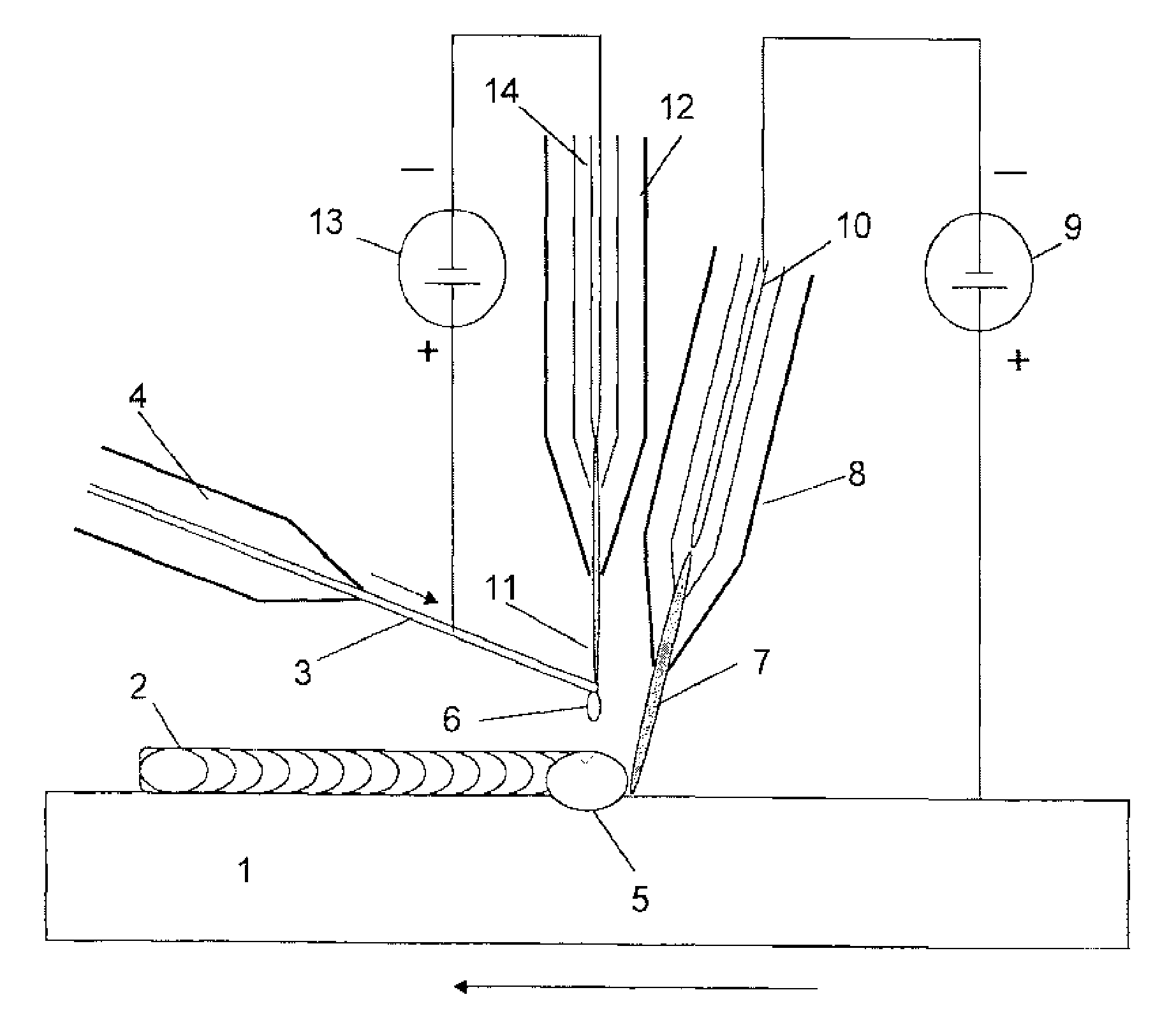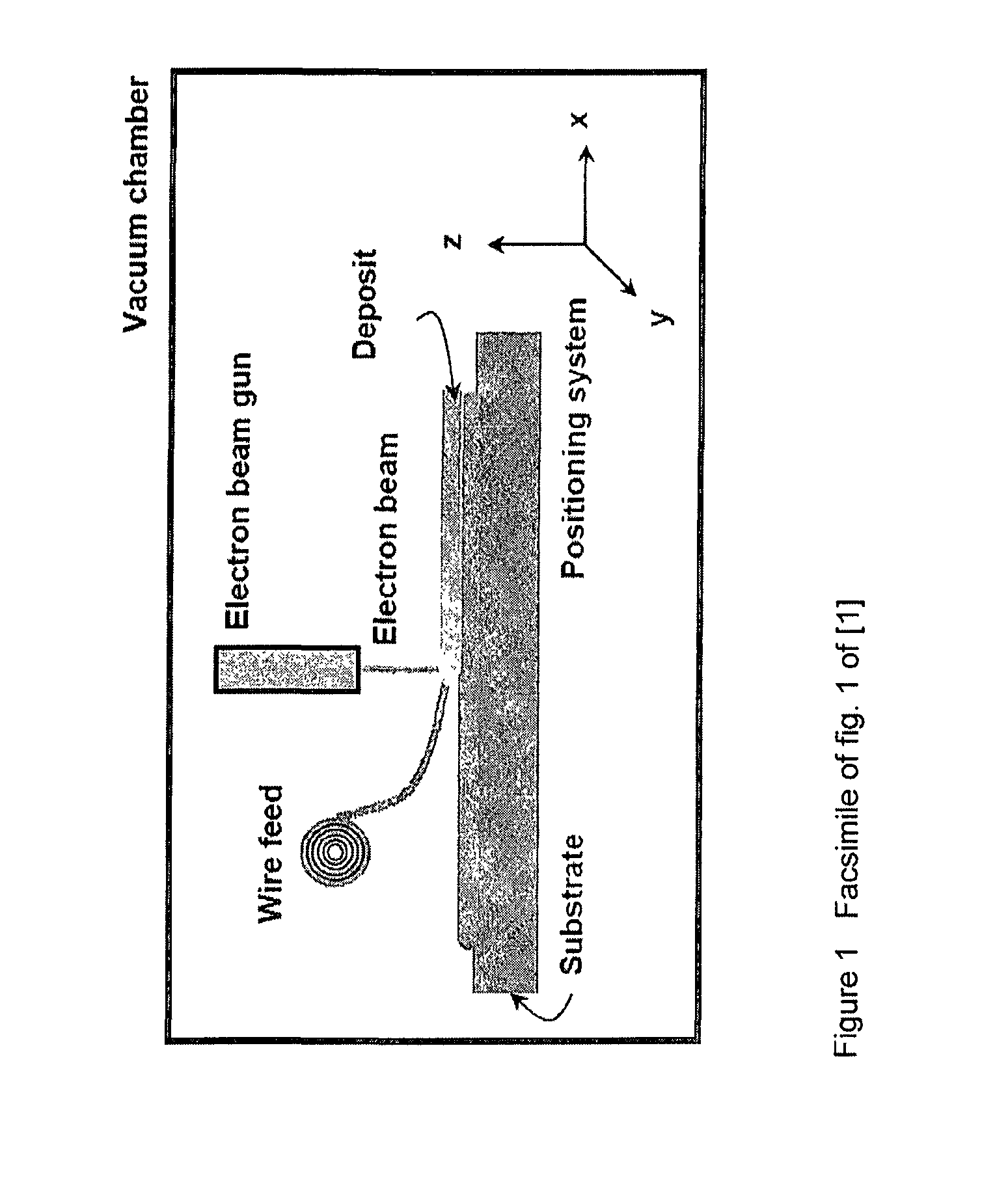Method and arrangement for building metallic objects by solid freeform fabrication
a technology of freeform fabrication and solid structure, applied in the direction of chemical vapor deposition coating, process and machine control, program control, etc., can solve the problem of limiting the application of ti to the effect of reducing the sensitivity of the ti layer, affecting the accuracy of the welding technique, and affecting the ti layer
- Summary
- Abstract
- Description
- Claims
- Application Information
AI Technical Summary
Benefits of technology
Problems solved by technology
Method used
Image
Examples
first example embodiment
[0049]The first example embodiment of the arrangement according to second aspect of the invention is shown schematically in FIG. 3. The figure shows a holding substrate 1 made of a Ti-6Al-4V alloy shaped as a rectangular cuboid, onto which a three-dimensional object made of the same Ti-6Al-4V alloy is to be formed by solid freeform fabrication. The figure displays the initial part of the deposition process where the first welding stripe 2 of Ti-6Al-4V alloy is being deposited.
[0050]A wire 3 made of the Ti-6Al-4V alloy is continuously being supplied by a wire feeder 4 which positions the wire 3 such that its distal end is located above the molten pool 5 at the deposition area on the holding substrate 1. The wire 3 is given a velocity indicated by the upper arrow on the Figure which corresponds to the heating and melting rate of the distal end such that droplets 6 of molten wire are continuously being supplied to the molten pool 5.
[0051]A first plasma transferred arc 7 is formed by a ...
second example embodiment
[0053]The second example embodiment of the invention is the first example embodiment given above including additional means for forming thermal pulses in the molten pool 5.
[0054]The means for forming thermal pulses is a DC power source 15 which is electrically connected to the second PTA-torch 12 such that the electrode 14 becomes the cathode and the holding substrate 1 becomes the anode. In addition, there are means 16 for pulsing the power delivered by DC power source 15 such that the arc 11 will in addition to heat and melt the wire 3, enter into the molten pool 5 with the same frequency as the pulsed power supply and thus deliver a pulsating heat flux to the molten pool. The means 16 may is regulated by the control system and provides a pulsing arc discharge into the molten pool with a frequency of 1 kHz.
PUM
| Property | Measurement | Unit |
|---|---|---|
| frequency | aaaaa | aaaaa |
| diameter | aaaaa | aaaaa |
| diameter | aaaaa | aaaaa |
Abstract
Description
Claims
Application Information
 Login to View More
Login to View More - R&D
- Intellectual Property
- Life Sciences
- Materials
- Tech Scout
- Unparalleled Data Quality
- Higher Quality Content
- 60% Fewer Hallucinations
Browse by: Latest US Patents, China's latest patents, Technical Efficacy Thesaurus, Application Domain, Technology Topic, Popular Technical Reports.
© 2025 PatSnap. All rights reserved.Legal|Privacy policy|Modern Slavery Act Transparency Statement|Sitemap|About US| Contact US: help@patsnap.com



